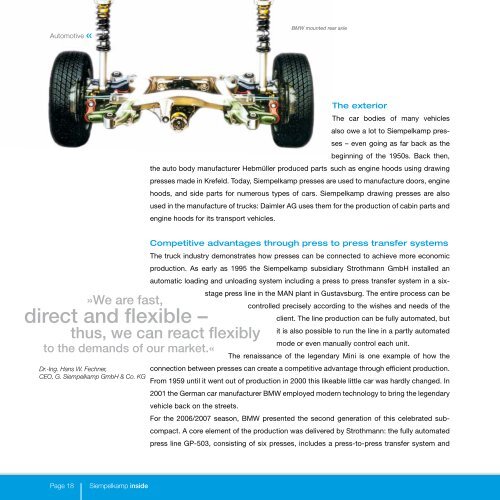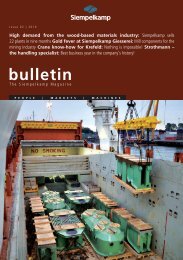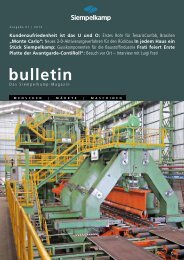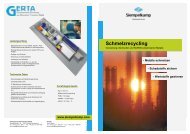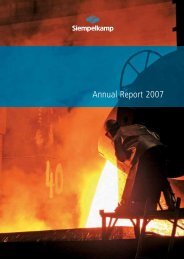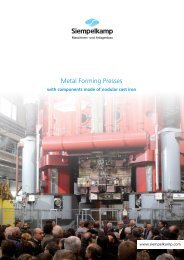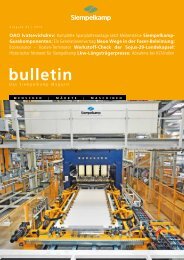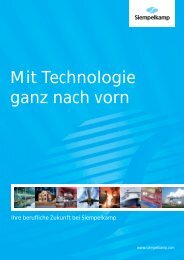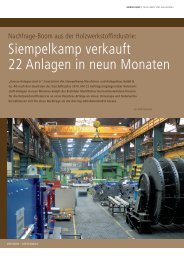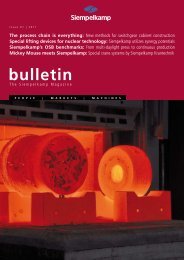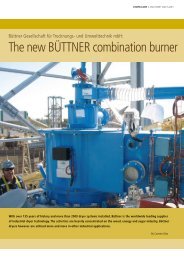Siempelkamp inside
Siempelkamp inside
Siempelkamp inside
Create successful ePaper yourself
Turn your PDF publications into a flip-book with our unique Google optimized e-Paper software.
Automotive ‹‹<br />
»We are fast,<br />
direct and flexible –<br />
thus, we can react flexibly<br />
to the demands of our market.«<br />
Dr.-Ing. Hans W. Fechner,<br />
CEO, G. <strong>Siempelkamp</strong> GmbH & Co. KG<br />
Page 18 <strong>Siempelkamp</strong> <strong>inside</strong><br />
BMW mounted rear axle<br />
The exterior<br />
The car bodies of many vehicles<br />
also owe a lot to <strong>Siempelkamp</strong> presses<br />
– even going as far back as the<br />
beginning of the 1950s. Back then,<br />
the auto body manufacturer Hebmüller produced parts such as engine hoods using drawing<br />
presses made in Krefeld. Today, <strong>Siempelkamp</strong> presses are used to manufacture doors, engine<br />
hoods, and side parts for numerous types of cars. <strong>Siempelkamp</strong> drawing presses are also<br />
used in the manufacture of trucks: Daimler AG uses them for the production of cabin parts and<br />
engine hoods for its transport vehicles.<br />
Competitive advantages through press to press transfer systems<br />
The truck industry demonstrates how presses can be connected to achieve more economic<br />
production. As early as 1995 the <strong>Siempelkamp</strong> subsidiary Strothmann GmbH installed an<br />
automatic loading and unloading system including a press to press transfer system in a sixstage<br />
press line in the MAN plant in Gustavsburg. The entire process can be<br />
controlled precisely according to the wishes and needs of the<br />
client. The line production can be fully automated, but<br />
it is also possible to run the line in a partly automated<br />
mode or even manually control each unit.<br />
The renaissance of the legendary Mini is one example of how the<br />
connection between presses can create a competitive advantage through efficient production.<br />
From 1959 until it went out of production in 2000 this likeable little car was hardly changed. In<br />
2001 the German car manufacturer BMW employed modern technology to bring the legendary<br />
vehicle back on the streets.<br />
For the 2006/2007 season, BMW presented the second generation of this celebrated subcompact.<br />
A core element of the production was delivered by Strothmann: the fully automated<br />
press line GP-503, consisting of six presses, includes a press-to-press transfer system and


